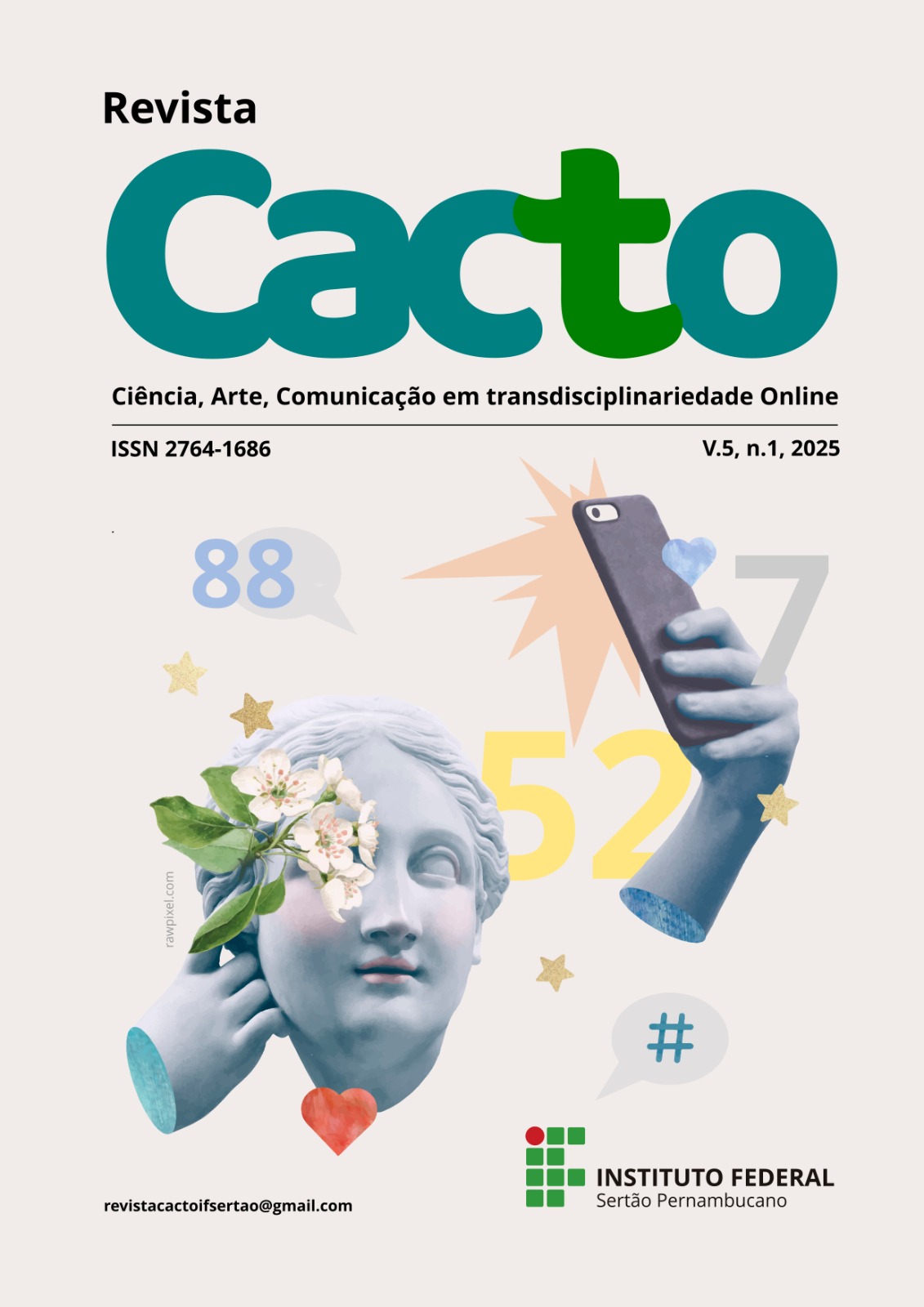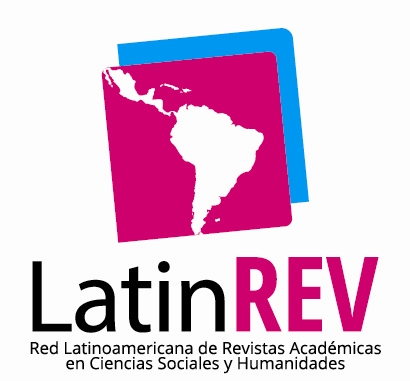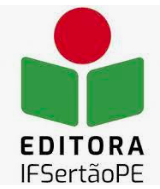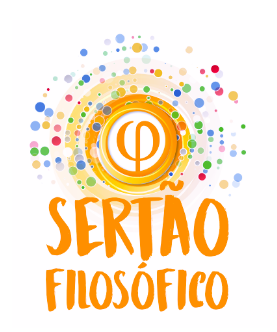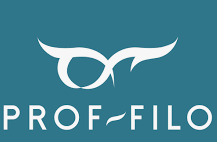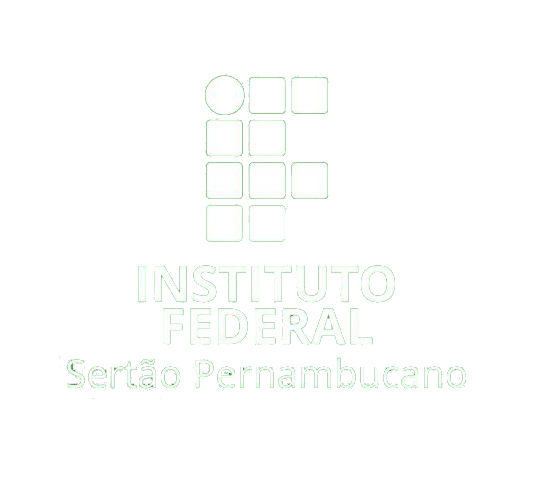MULTILITERACIES AND DIGITAL CULTURE
a PIBID experience for meaningful learning in elementary education in Petrolina-PE
Visualizações: 217DOI:
https://doi.org/10.31416/cacto.v5i1.1452Keywords:
Tecnologias Digitais; Consciência Fonológica; Alfabetização; Letramento DigitalAbstract
The article reports on the experience of the Institutional Program for Teaching Initiation Scholarships (PIBID) in Elementary Education in Petrolina-PE, focusing on the integration of digital culture, multiliteracies, and the Theory of Meaningful Learning (TAS). The aim is to analyze how these approaches can enrich the teaching-learning process, making it more meaningful. TAS, developed by David Ausubel (Ausubel, 2003), is a cognitive theory that emphasizes the importance of connecting new knowledge with pre-existing cognitive structures, known as "subsumers." The concept of digital culture is explored as an essential context for contemporary education. The Pedagogy of Multiliteracies, proposed by the New London Group (Cazden et al., 1996), highlights the importance of including diverse cultures and multiple languages, such as audio, images, and videos in teaching. Within PIBID, from this perspective, digital didactic materials were developed, such as the game "Syllabic Memory," to work on students' phonological awareness. The game involves identifying pairs of cards with words that share the same initial syllable, promoting reflection on their sounds. The results indicated that the use of digital technologies can make learning more attractive and meaningful by leveraging students' prior knowledge and relating it to the digital world. This approach does not aim at rote learning but promotes the internalization of knowledge, leading to students' intellectual autonomy (Taille et al., 2019). It concludes that the pedagogy of multiliteracies can contribute to a critical and civic education in contemporary society.
References
ANASTASIOU, Léa das Graças Camargos; ALVES, Leonir Pessate. Processos de ensinagem na universidade: pressupostos para as estratégias de trabalho em aula. Joinville, SC: Editora Univille, 2015, 10 ed.
AUSUBEL, David Paul. Aquisição e retenção de conhecimentos: Uma perspectiva cognitiva. Tradução: Lígia Teopisto. PARALELO EDITORA, LDA. 1.ª Edição PT-467-Jan. de 2003, ISBN 972-707-364–6.
BARBOSA, Maria do Rosario da Silva Albuquerque. PIBID: Programa Institucional de Bolsa de Iniciação à Docência. CAPES, 2022.
BRANDÃO, A. C. P. et al. Jogos de Alfabetização. Editora Universitária UFPE, CEEL, MEC, 2008. ISBN 978-85-7526-318-1.
BRASIL. Constituição (1988). Constituição da República Federativa do Brasil. Brasília, DF: Senado Federal, 1988. Disponível em: https://www.planalto.gov.br/ccivil_03/Constituicao/Constituicao.htm. Acesso em: 23/06/2024.
BRASIL. Lei de Diretrizes e Bases da Educação Nacional. Brasília, DF, Lei nº 9.394, de 20 de dezembro de 1996.
BRASIL. Ministério da Educação. Programa Institucional de Bolsa de Iniciação à Docência (PIBID). Disponível em: Pibid - Programa Institucional de Bolsa de Iniciação à Docência — CAPES (www.gov.br). Acesso em: 23 jun. 2024.
CAZDEN, C.; COPE, B.; FAIRCLOUGH, N.; GEE, J.; et al. A Pedagogy of Multiliteracies: Designing Social Futures. In: Harvard Educational Review; Spring 1996; 66, 1; Research Library, p. 60.
FERREIRO, Emília; TEBEROSKY, Ana. Psicogênese da língua escrita. Porto Alegre: Artes Médicas, 1999.
FREIRE, Paulo. Pedagogia da autonomia: saberes necessários à prática educativa. São Paulo: Paz e Terra, 1996. ISBN 85-219-0243-3.
LEAL, T. F.; ALBUQUERQUE, E.B.; LEITE, T. R. Jogos: alternativa didática para brincar alfabetizando (ou alfabetizar brincando?). In: MORAIS, A.; ALBUQUERQUE, E.; LEAL, T. Alfabetização: apropriação do sistema de escrita alfabética. Belo Horizonte: Editora Autêntica, 2005.
LÉVY, Pierre. Cibercultura. Tradução: Carlos Irineu da Costa. São Paulo: 34 Ltda, 1999. ISBN 85-7326-126-9.
PINTO, Marcelo Garson Braule; FRAZÃO, Fernanda. CULTURA DIGITAL. In: ARAUJO, Mônica Daisy Vieira; FRADE, Isabel Cristina Alves da Silva; MORAIS, Ludymilla Moreira (org.). Termos e Ações Didáticas Sobre Cultura Escrita Digital: NEPCED na Escola. Belo Horizonte: UFMG, 2022, p. 74-75.
ROCHA, D. S. C. S.; RICHARTZ, T. Prática de oralidade em sala de aula: Foco no desenvolvimento pleno do educando. Revista Ibero-Americana de Estudos em Educação, Araraquara, v. 18, 2023. e-ISSN: 1982-5587.
ROJO, Roxane Helena Rodrigues; MOURA, Eduardo (orgs.). Multiletramentos na escola. São Paulo: Parábola Editorial, 2012.
SOARES, M. Alfaletrar: toda criança pode aprender a ler e a escrever. São Paulo: Contexto, 2020.
SUBSUME. In: Oxford Advanced Learner’s Dictionary of Current English. HORNBY, Albert Sydney. Oxford University Press, 4ª ed., 1989, p. 631. ISBN 0-19-431136-8.
TOALA PONCE, S. R..; GÓMEZ PINILLO, L. Y..; GUEVARA HEREDIA, R. N..; QUIÑONEZ ORTIZ, E. C.. Application of Bloom’s taxonomy to improve teaching-learning. Sapienza: International Journal of Interdisciplinary Studies, São Paulo, Brasil, v. 3, n. 6, p. 176–189, 2022. DOI: 10.51798/sijis.v3i6.507. Disponível em: https://journals.sapienzaeditorial.com/index.php/SIJIS/article/view/507. Acesso em: 24 jun. 2024.

